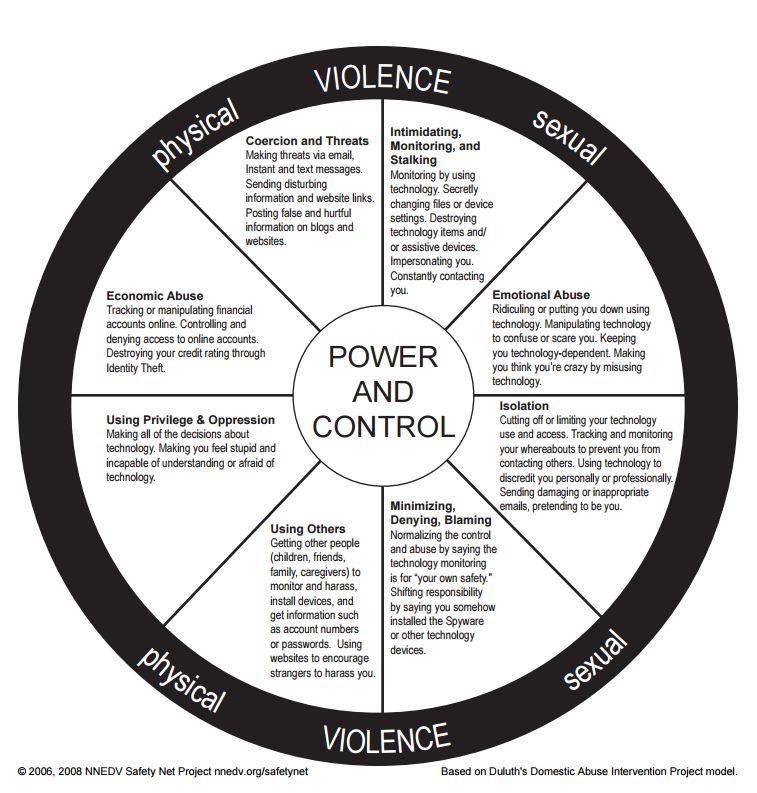Perpetrators of sexual violence exert numerous forms of pressure and force over survivors.
This can include intimidation and threats; assaultive behaviour or physical force; the use of alcohol or other substances; the use of power imbalances created by social status and systems of discrimination, formal position or role, physical size or strength or ability; persistent pressure to wear down the survivor; and the exploitation of vulnerabilities.
Perpetrators exploit myths about gender, gender identity, race, ethnicity, class, disability and sexual orientation. Perpetrators target others whom they see as subordinate or inferior to them by exploiting social myths and stereotypes. “At the moment of trauma, almost by definition, the individual’s point of view counts for nothing. In rape, for example, the purpose of the attack is precisely to demonstrate contempt for the victim’s autonomy and dignity” (Herman, 1997)
Most sex offenders are prosocial other than their sexually violent behavior. Other than being mainly men they are not particularly distinguishable from general society. This supports the myth that sex offenders are easily identifiable social misfits or sinister strangers (Marshall 1996). In fact, while some acts of sexual violence are indeed perpetrated by strangers , sex offenders are most often someone from amongst the survivor’s family, a partner, or circle of friends/colleagues. Perpetrators often purposefully select and use coercive tactics that appear to be socially acceptable.
Researchers have identified a number of interpersonal coercive methods:
- “positive” persuasion (e.g., compliments; making promises; paying special attention or “grooming”. In fact, being “nice” can be a powerful weapon. It is more difficult to distrust or confront someone who is nice or pays special attention. In this way a perpetrator exploits the myth that niceness cannot co-exist with violence;
- neutral tactics of persuasion (e.g., continually requesting, nagging or leading for sex);
- physical persuasion tactics(e.g., kissing, sexual touching);
- gaining access strategies (e.g., isolating the woman; using false pretenses to be alone with the woman);
- negative verbal persuasion (e.g., threats to end the relationship; expressing dissatisfaction with the woman; swearing; withdrawing)
Substance Facilitated Sexual Violence
Alcohol and drugs can be one of the most significant risk factors for sexual violence on college and university campuses. While not a cause, there is a strong relationship between sexual violence and the use of alcohol or drugs. In fact, over half of sexual assaults of post-secondary students involve alcohol or drugs. (Abbey 2014). The use of alcohol or other drugs to intentionally incapacitate or sedate another person for the purpose of sexual assault is referred to as “drug-facilitated sexual assault”. From Ministry of the Status of Women Ontario: Developing a Response to Sexual Violence: A Resource Guide For Ontario’s Colleges and Universities
Workplace Sexual Harassment
Students are often also employees and their employment is usually precarious. They may be employed outside of the university or college or they may be employees of the institution itself. Students who are employed by their postsecondary institutions have a variety of positions; in research, student residence, TAs, tutoring, peer supports, administration, paid cooperatives and field placements, medical residencies, law articling, businesses run by their training programs such as Hospitality, Esthetics, Health Sciences and so on.
A 2014 an Angus Reid Institute survey found that “Three-in-ten Canadians say they’ve been sexually harassed at work, but very few have reported this to their employers”.
In its 2013 Policy on preventing sexual and gender-based harassment, the OHRC recognized the severe impacts of sexual harassment on working women and trans people. “It can reduce employees’ morale, decrease productivity and contribute to physical and emotional effects such as anxiety, depression and posttraumatic stress disorder.”
“How is sexual harassment an illegal form for sex discrimination while simultaneously sexually harassing practices feature as a common experiences for women in paid work?” Sexual Harassment in Precarious Workplaces, Matulewicz 2018

‘Draw The Line’ is an interactive campaign that aims to engage Ontarians in a dialogue about sexual violence. The campaign challenges common myths about sexual violence and equips bystanders with information on how to intervene safely and effectively. Watch their video about work place harassment or visit them on their website.
Sexual Harassment Online
Cyberbullying and harassment involves the use of communication technologies such as social media sites, websites, email, text messaging, instant messaging and any other platform to repeatedly intimidate or harass others. Cyber bullying is emerging as one of the more challenging issues facing educators as the Internet and other mobile communication technologies are increasingly embraced.
Stalking behaviours include unwanted email, texts and social media messages. Learn more [HERE].
Cyber Misogny
“Cyber misogony refers to the various forms of gendered hatred, harassment, and abusive behavious targeted at women and girls via the internet. It draws attention to the discriminatory nature of this behaviour, which occurs within a context of power and marginalization. In this way, cyber misogony is a more nuanced term than the more general “cyberbullying”…technology therefore facilitates the proliferation of gendered hate and harassment”. (Centre for Research & Education on Violence Against Women and Children)
Organizations have a responsibility to maintain poison-free environments. To this end, they must be aware of the potential discriminatory effects when online technology is used on their premises for improper purposes (OHRC).
Learn more about sexual violence and online environments [HERE].
Click [HERE] for Cyberbullying Legislation
Power and Control Wheel On Technology & Abuse:


